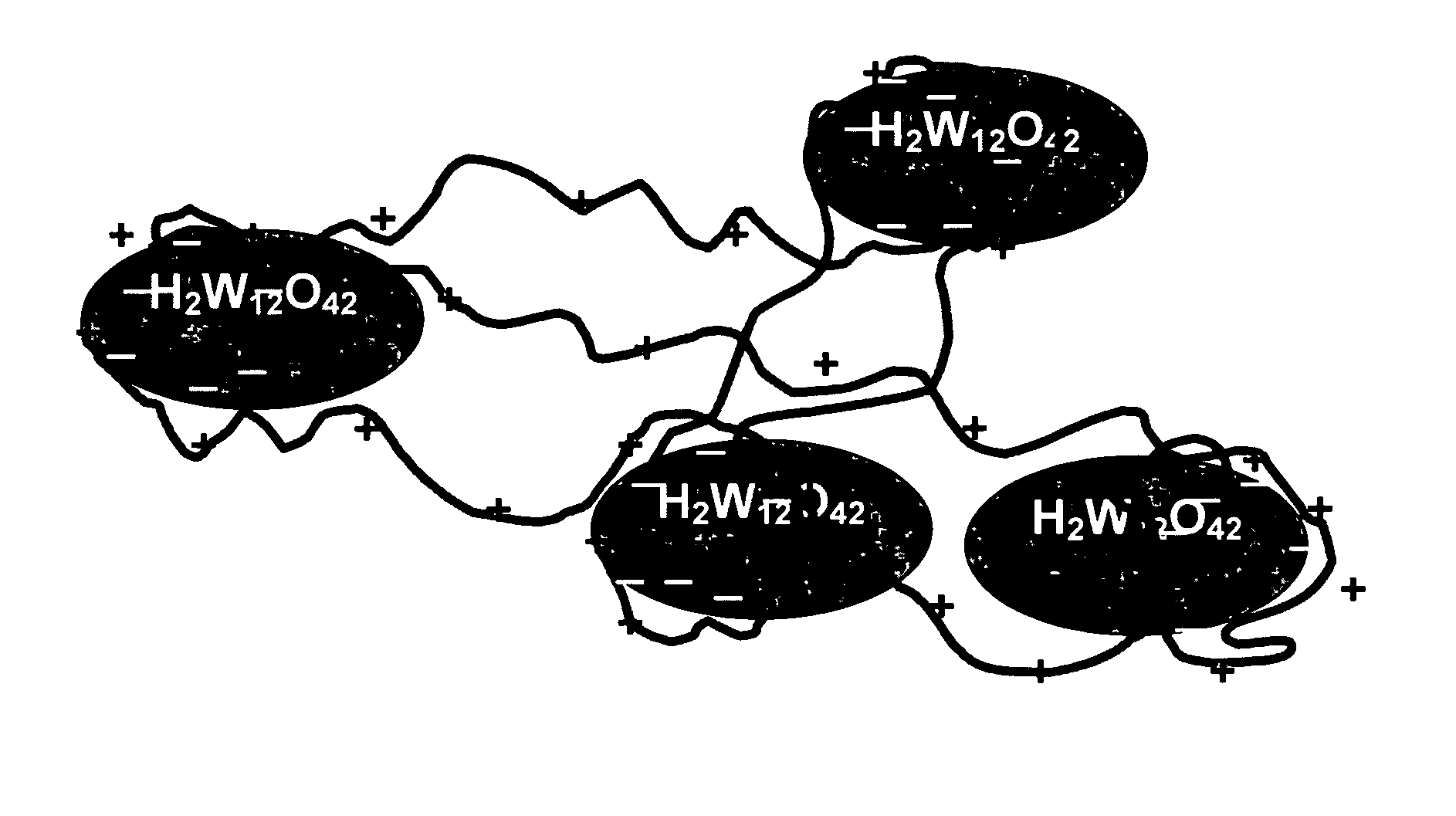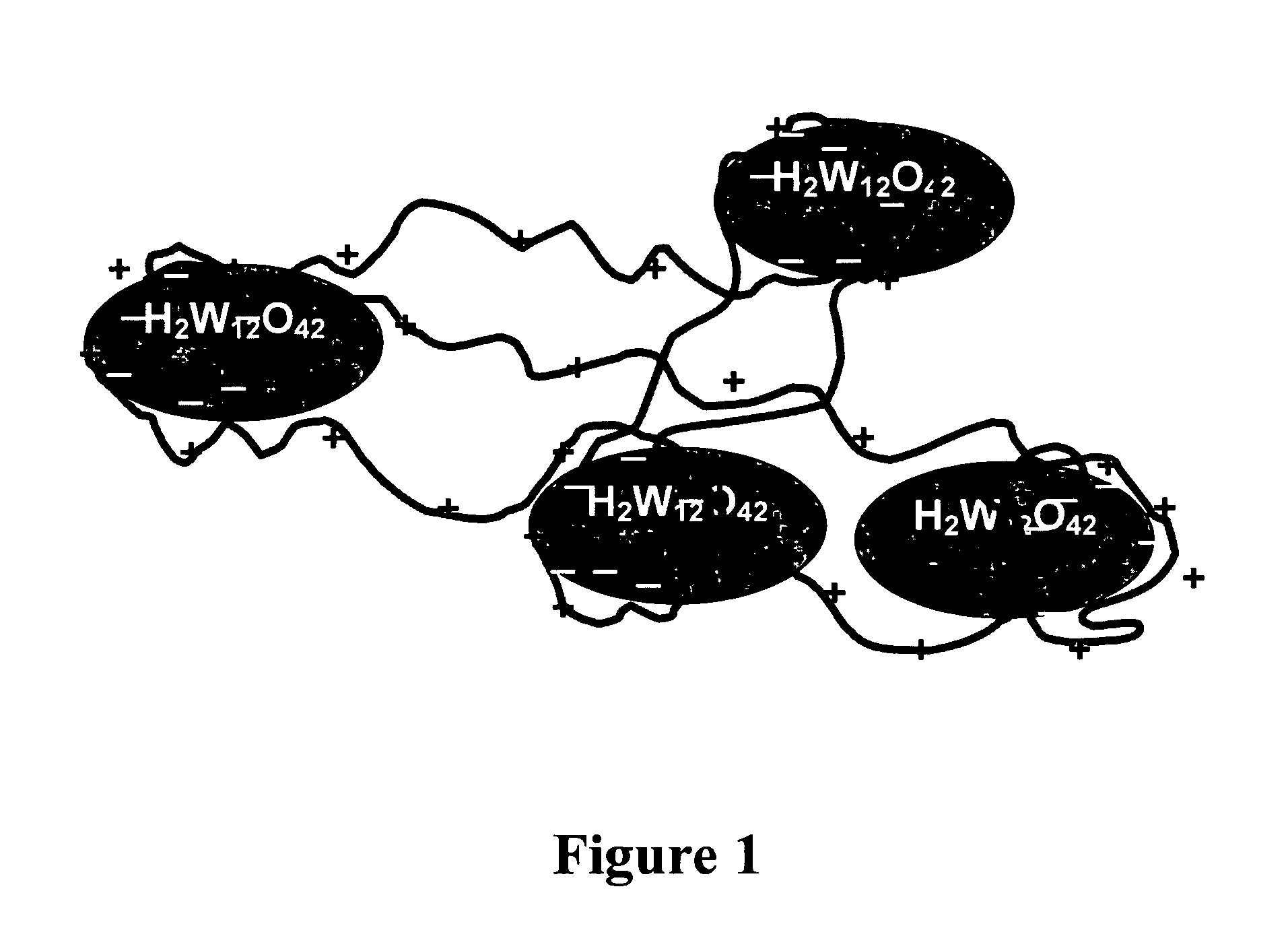Polyoxometalate compositions and methods
a polyoxometalate and composition technology, applied in the field of polyxometalate compositions and methods, can solve the problems of poor surface quality, low polishing rate of polishing compositions and polishing pads, and poor surface quality of conventional polishing systems and polishing methods, so as to reduce defectivity and maintain substrate removal rates
- Summary
- Abstract
- Description
- Claims
- Application Information
AI Technical Summary
Benefits of technology
Problems solved by technology
Method used
Image
Examples
example 1
[0048]This example illustrates the preparation of a preformed polyoxometalate complex of the present invention comprising an isopolytungstate salt ionically bound to poly(methacryloxyethyltrimethylammonium chloride).
[0049]About 10 grams of tungstic acid (H2WO4, about 40 mmoles) were dissolved in about 400 g of water and the pH was adjusted to about 9 with 14 g of 30% aqueous ammonia solution. The resulting ammonium tungstate solution was then added (dropwise), with vigorous stirring to about 700 g of a solution with the following composition: about 16 ppm Fe(NO3)3, about 320 ppm malonic acid, about 1000 ppm glycine, and about 230 ppm (a total of about 0.16 grams of polymer, about 0.77 mmoles) of polymadquat (i.e., poly(methacryloxyethyltrimethylammonium) chloride), over a four hour period at room temperature, while maintaining the pH at about 2.3. After all the ammonium tungstate was added, the slurry was left stirring overnight so that the condensation / polymerization of tungstate a...
example 2
[0050]This example illustrates the preparation of preformed particulate polyoxometalate complexes of the present invention comprising an isopolytungstate salt ionically bound to poly(methacryloxyethyltrimethylammonium chloride) and having a silica core.
[0051]In a first procedure, about 2 grams of tungstic acid (H2WO4, about 8 mmoles) was dissolved in about 100 g water and the pH was adjusted to about 9 with about 10 g of 30% aqueous ammonia solution. The resulting ammonium tungstate solution was then added (dropwise) with vigorous stirring to about 700 g of a solution containing about 16 ppm Fe(NO3)3, about 320 ppm malonic acid, about 1000 ppm glycine, and about 230 ppm polymadquat (a total of about 0.16 grams of polymer, about 0.77 mmoles) maintained at a pH of about 2.3, over a two hour period at room temperature. After all the ammonium tungstate was added, the slurry was left stirring overnight so that the condensation / polymerization of tungstate anions catalyzed by the cationic ...
example 3
[0052]In an alternative to the procedure of Example 2, about 2 grams of H2WO4 was dissolved in about 100 g of water and the pH was adjusted to about 9 with about 10 g of 30% aqueous ammonia solution. The resulting ammonium tungstate solution was added (dropwise) with vigorous stirring to about 700 g of a fumed silica based slurry over a two hour period at room temperature while maintaining the pH at about 2.3. The slurry contained about 0.5 percent by weight fumed silica, about 16 ppm Fe(NO3)3, about 320 ppm malonic acid, about 1000 ppm glycine, and about 230 ppm polymadquat. After all the ammonium tungstate was added, the slurry was left overnight under stirring so the condensation / polymerization of tungstate anions and complexation by the cationic polymer quaternary groups was completed. The newly formed silica / isopolytungstate / polymer hybrid particles were characterized by particle size, and FT-IR measurements, then used as abrasive for tungsten CMP. The mean particle size was ab...
PUM
| Property | Measurement | Unit |
|---|---|---|
| mean particle size | aaaaa | aaaaa |
| weight average molecular weight | aaaaa | aaaaa |
| weight average molecular weight | aaaaa | aaaaa |
Abstract
Description
Claims
Application Information
 Login to View More
Login to View More - R&D
- Intellectual Property
- Life Sciences
- Materials
- Tech Scout
- Unparalleled Data Quality
- Higher Quality Content
- 60% Fewer Hallucinations
Browse by: Latest US Patents, China's latest patents, Technical Efficacy Thesaurus, Application Domain, Technology Topic, Popular Technical Reports.
© 2025 PatSnap. All rights reserved.Legal|Privacy policy|Modern Slavery Act Transparency Statement|Sitemap|About US| Contact US: help@patsnap.com


